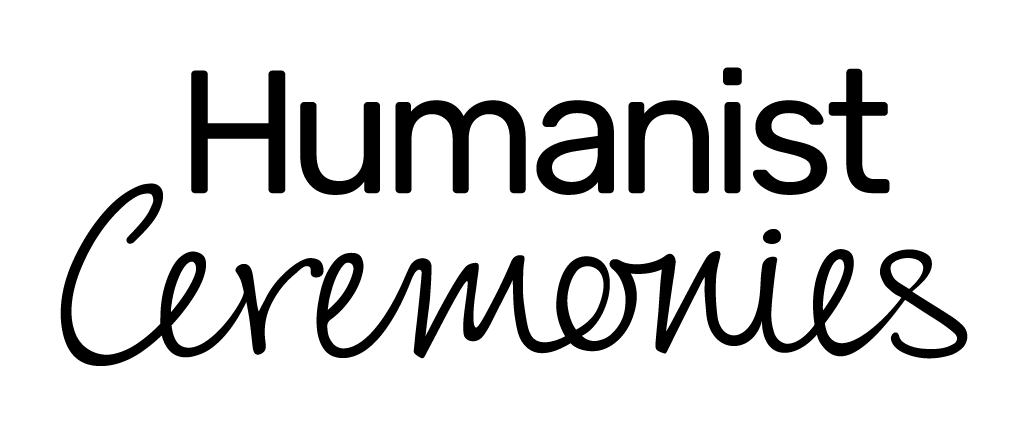Funerals
How we might proceed
Every humanist funeral is tailored to the beliefs of the person who has died, and the wishes of the people who are arranging the day, but a typical order of events could be as follows.
Meeting
After an initial telephone call, we would meet for a detailed conversation. Usually this would be face to face, but it can be conducted online if necessary. This would ideally be with everyone who you wish to have a say in the content of the funeral ceremony, or who can shed light on the life and character of the person who has died. If anyone important cannot be there, I will contact them later.
The purpose of the meeting is two-fold:
To get a fully rounded picture of the person who has died
Not just their life history, but what they were like as a person: what was important to them, what got them excited, what made them smile… their little habits and catchphrases.
This will enable me to write a tribute that sums them up in the way you would like them to be remembered.
To plan the content of the ceremony
Although many funerals contain similar elements, you actually have considerable freedom over the structure and content. We will discuss all the options, and jointly create an event that meets your needs. You may already have ideas about music, poetry or other readings, and who may perform them. If not, I am happy to suggest items that may be appropriate.
We will also discuss the tone of the ceremony, especially how formal or informal you would like it to be. Although it will inevitably be a sad occasion, it is absolutely fine to include elements that may raise a smile or even a laugh.
Drafting and approval
Over the next few days, I will draw up a draft running order, placing music and other elements so as best to enhance the ceremony. This will usually include the tribute (sometimes called the eulogy) in full.
You will be able to read this in your own time before requesting any changes. I will then send you a final agreed order of ceremony.
On the day
I will work hand-in-hand with your chosen funeral director and the staff at the crematorium or cemetery (where appropriate). Our job is to ensure this important event runs smoothly and in accordance with your wishes.
Depending on your preference, I may take on all the spoken elements in the chapel, the graveside or other venue. Sometimes I may act more as an MC, simply introducing and linking other speakers. Or as is often the case, it may be somewhere in between.
Although there are many possible variations, this is one way in which a ceremony may proceed:
- Music as the coffin is brought in
- Welcome and introduction, including brief thoughts on life and death
- Poetry or prose: read by the celebrant, a friend or a family member
- The tribute
- Personal memories of the deceased: from a relative, friend or colleague
- Time for quiet reflection, perhaps with music
- The formal committal of the body, with appropriate words
- Another piece of poetry or prose
- An announcement concerning practical elements: special thanks, arrangements for the reception, donations to charity
- Closing words
- Music as people leave
Afterwards, you will take home your own presentation copy of the ceremony script. People are often comforted to have a permanent record of the event which they can look back on.
Next steps
If you feel that this sort of approach would help you best mark the death – and celebrate the life – of the deceased person, do please get in touch on 07 870 812 949, or mail@keridavies.net and we can discuss things further.

